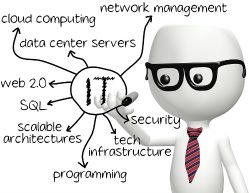Why is Technology Holding Credit Unions Back?
 Outdated credit union technology is often blamed as a huge challenge. Adding to that is the complexity of multiple systems that have been added over the years, weighing IT resources down... Sort of a hodgepodge of IT infrastructure meant to keep up with the pace of technology, yet creating a burden on staff and resources.
Outdated credit union technology is often blamed as a huge challenge. Adding to that is the complexity of multiple systems that have been added over the years, weighing IT resources down... Sort of a hodgepodge of IT infrastructure meant to keep up with the pace of technology, yet creating a burden on staff and resources.
In theory, multiple systems that make up the IT infrastructure at credit unions are tools for boosting productivity to free up employee time that can then be spent on members. An article from CreditUnionTimes discusses how legacy technology was stunting the growth of a California based credit union. The article states, for example, “a recent survey uncovered that 75% of credit unions are running a document imaging system that is five or more years old. These legacy systems are no longer being upgraded by their suppliers and are widely regarded by their administrators as difficult to maintain and, most importantly, nearly impossible to integrate with newer systems that are the key to the future success of credit unions. These include loan origination systems, eSignature tools and updated core processors. Not surprisingly, these very same systems are the key to future loan growth, member acquisition and retention, and operating efficiency.”
Credit unions find that even having some new systems working alongside legacy systems become a burden and prevent future system integrations. Having a new core, new membership and loan origination systems, and a new eSignature platform all running on different platforms without automated workflows, creates a huge headache within IT. It also puts a strain on other organizational resources. Updating legacy technology that integrates with other new systems can free up resources and allow you to expand member offerings.
From back office tasks to branch automation and everything in between, credit unions demand technology that runs smoothly and meets their day-to-day needs. It may seem easier to just put a bandaid on a problem. But in a technology heavy industry, you need a solid plan to coordinate current and future IT systems. You must be able to identify the issues obsolete IT systems can cause. Find a core solution partner to get your systems functioning at their best, so you can maintain a focus on creating efficiencies both internally and externally for members.



